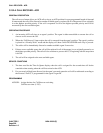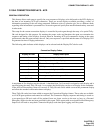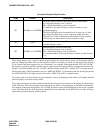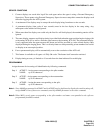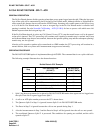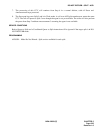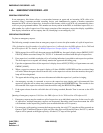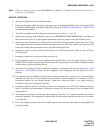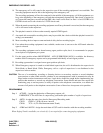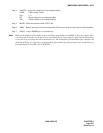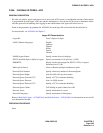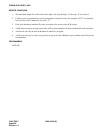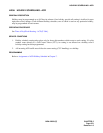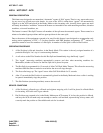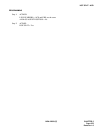
CHAPTER 5 NDA-24282 (E)
Page 246
Revision 1.0
EMERGENCY/RECORDER - ACD
14. The emergency call is still routed to the supervisor even if the recording equipment is not available. The
recording equipment must be idle at the beginning of the emergency call.
The recording equipment will not be connected in the middle of the emergency call if the equipment was
busy at the beginning of the emergency call and then subsequently became idle. One circuit is required as
an i7tween the emergency recorder and the PBX; this circuit can be Port 0 or Port 1 of an 8 COTBF or 16
COTBD circuit card or one circuit of a 8 TLTR circuit card.
15. When the trunks connecting the recording equipment are all busy, the trunk is not seized, but the emergency
call is still routed to the supervisor.
16. The playback controls of the recorder normally require DTMF signals.
17. Any trunk-side connectable recording device may be provided, but a device which has playback controls is
strongly recommended.
18. Most recording devices impose some mechanical delay before recording begins.
19. Even when the recording equipment is not available, reorder tone is sent out to the ACD trunk when the
agent is released.
20. The recording equipment can be shared among agent position splits, but it is recommended to prepare
several pieces of equipment per system.
21. For the agent position where MONITORING - ACD SUPERVISOR [M-28] is available, the directory
number used for emergency request can be programmed individually on each agent position.
22. Recording type number is assigned on an agent position split basis.
23. When Emergency requests is routed to an individual supervisor, the call is distributed to the supervisor in
Work Mode or Break Mode. While, Emergency call to a split of supervisors is not distributed to the
supervisors in those modes.
CAUTION:
The use of a monitoring, recording or listening devices to eavesdrop, monitor or record telephone
conversations or other sound activities, whether or not contemporaneous with its transmission, may be
illegal under certain circumstances and laws. Legal advice should be sought before implementing any
practice that monitors or records any telephone conversation. Some federal and state laws require the
monitoring party to use beep tones, to notify all parties to the telephone conversation, or to obtain the
consent of all parties to the telephone conversation. Some of these laws incorporate strict penalties.
PROGRAMMING
Step 1: ACDSPL - Assign the destination of Emergency request call.
EMERGENCY The ACD line of a supervisory position/the pilot number of a split of supervisors
Step 2: ARTD - Assign the route class data for Emergency/Recording trunk.
CDN2: ONSG = 2 (PB), 60 msec. interval
CDN6: TCL = 4 (Tie Line/Announcement Trunk)
Step 3: ATRK and ALRTN- Assign the trunk data of COT used for interface with the recording machine.
When Paging Trunk is available, two circuits (0, 1) are required for connecting paging equipment.



